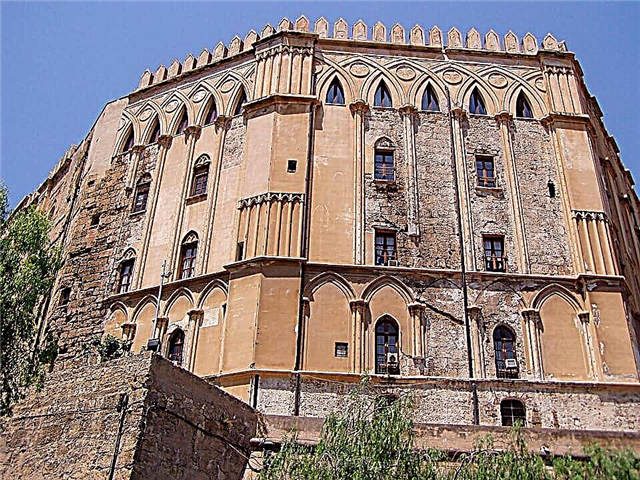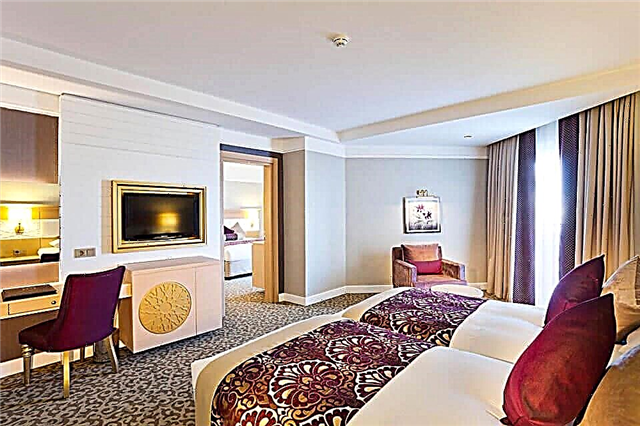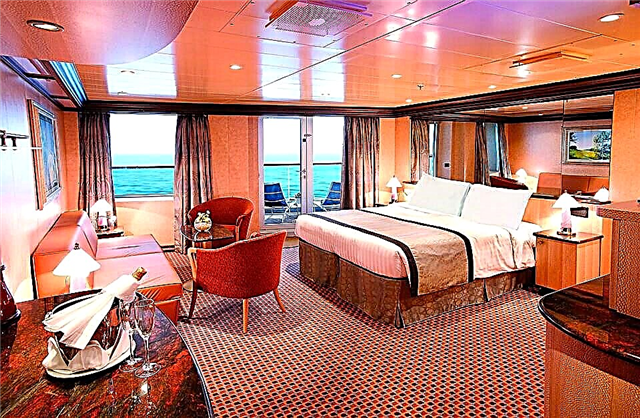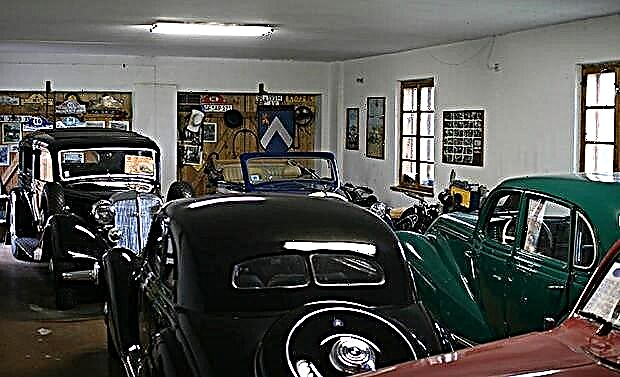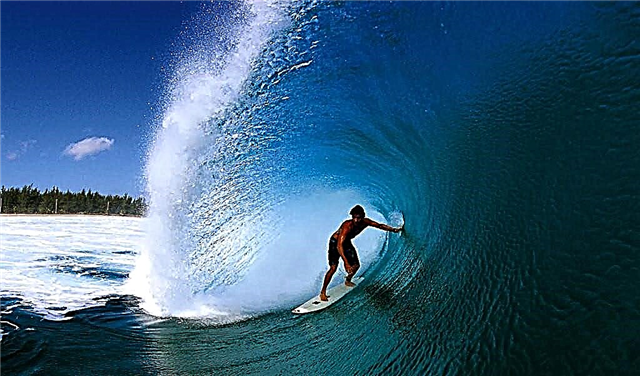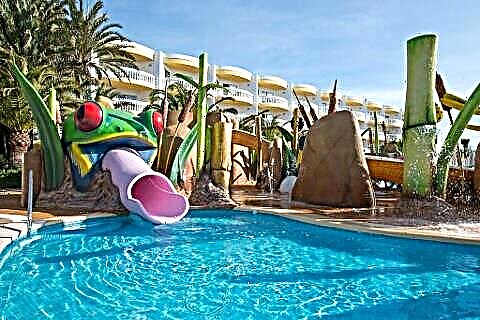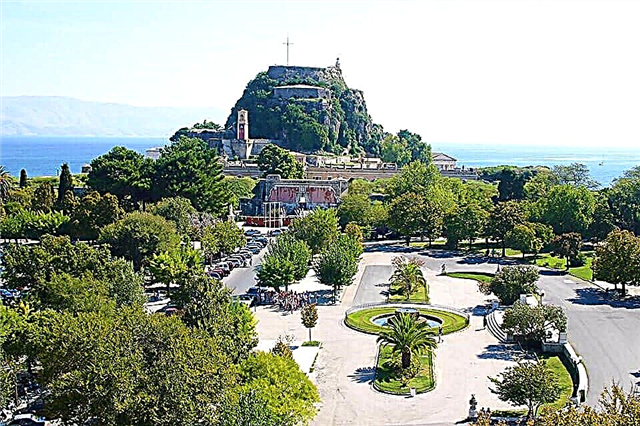The island of Corfu, fanned by legends and myths, is located in the northernmost part of the Greek coast and is washed by the gentle waves of the Ionian Sea. The Greeks themselves call Corfu an "unexpected" island among their six brethren. Mountains, valleys, forests, quaint coastline, tangled serpentine roads make the journey long, mysterious and romantic. The island itself provokes travelers to turn off the main road, and having done this, you can immediately find yourself in the most secluded corners. In the distant Middle Ages, it was believed that the name of the island referred to the word "corifo", meaning "top", but this is not its only name. The Greeks themselves prefer the name "Kerkyra", after the mythological nymph, the beloved of Poseidon. The capital of the island is also called, a magical town, original and inimitable.
Kerkyra or Corfu town

Having reached the island by plane or ferry from the mainland, the first thing tourists tend to visit is Kerkyra or Corfu Town. For centuries Corfu has been a favorite destination for Venetians, English, Romans and French alike. Therefore, the appearance of the city has absorbed the influence of different cultures, and many architectural masterpieces have survived to this day. Those who have been to Italy, or at least have seen photographs of Italian cities, will immediately note the similarity of the architecture of Kerkyra with the Venetian one.
But the true feeling of tourists lies in a magical symbiosis: it seems that you are simultaneously in England, and in Italy, and in Greece, and in France. For many centuries, the city was torn between the influence of these states, and every ruler tried to leave his mark here. An interesting fact is that there is a whole street in Corfu Town - an exact copy of the French Rue de Rivoli.

The image of Corfu Town and its lifestyle is the result of the island's eventful history and contact with European cultures. It is not easy to try to describe the city in a few phrases. The architecture is European, including English palaces and Venetian houses, monasteries and churches. The greenery of the parks, thousands of olive trees and the transparent air enveloping the streets fill the city with colors and freshness.
The people are very friendly and welcoming, religious and musical. Holidays with a huge number of people and brass bands. Kerkyra is a celebration of joy and prosperity, gathering art lovers from all over the world for its cultural events: concerts of the Philharmonic, exhibitions of local artists "Art Autumn", the Kerkyra carnival - the twin of the Venetian "carnival of masks".

A special place among the cultural events of Kerkyra is held by the celebration of Easter. For these three Easter days, the whole mainland Greece seeks to get exactly to Corfu. Hotels are booked per year, 70 thousand visitors to 130 thousand of the local population. Only because only on this Greek island Easter is celebrated as it happened centuries ago.
Only here not a single tradition of spending three Easter days has been lost, from Good Friday to Easter Sunday. Nowhere else on Saturday, even before dawn, do they begin to "rock" the walls of the temple, symbolizing an earthquake. Nowhere else at exactly 11 in the afternoon pots of water do not fly from the windows of houses. And nowhere else the whole island, from young to old, participates in all Easter events, and 15 brass bands take part in the processions here. At 9 pm, when the ceremony of lighting the holy fire in the church of St. Paraskeva takes place, it is taken out to the square, where the Easter liturgy continues in the gazebo.

Exactly at midnight the Annunciation and the lighting of the Grand Cross. Above the old fortress, colorful fireworks display, the most impressive in all of Greece. On Easter Sunday, there is a traditional roast lamb lunch and other simple human pleasures. Such a unique and eventful Easter will not be seen anywhere else.
Most people associate Greece with antiquity. And these are the Gods of Olympus, marble statues, ruins of theaters and temples. But for Russian people, especially believers, what is important is that it was on the Greek land that Orthodoxy was born and established. There are countless Orthodox churches in Greece. They are everywhere, they are an integral part of the Greek landscape. In them, the Greeks consecrate marriages, they come to them to conduct traditional religious rituals.
Temple of Spyridon Trimifuntsky

A special place in the hearts of the Greeks, and especially the inhabitants of Corfu, is occupied by the patron saint of the island, Spyridon Trimifuntsky. Modest in appearance, the temple named after this saint is hidden in the web of narrow medieval streets of the city, but everyone knows the way to it. Pilgrims from all over the world strive for the imperishable relics of St. Spyridon, and legends about the miracles of healing and helping people still haunt many scientists. Exactly a week before Easter, St. Spyridon's Day is solemnly celebrated on the island, and in terms of breadth and cordiality this holiday is in no way inferior to the scale of the celebration of Easter days.
Achilleion palace

Another landmark is the Achilleion Palace. It was built by Elizabeth of Austria, better known in Greece as Empress Sisi. During her long travels in Europe at the end of the 19th century, she visited Corfu. It seemed to her that it was in this place that she could find peace of mind. Sisi, having started the construction of the palace, decided to dedicate it to her beloved hero, Achilles. And so Achilleion came into being.
She herself designed every corner of both the palace and the park. There was not even a hint of pomp and luxury inside the palace. It was more a house built with great love and taste than an imperial palace. The exterior and interior of the palace was subsequently changed by its next owner, the Kaiser of Germany, Wilhelm II. Despite the changes, it has not lost its appeal at all and to this day it is one of the business cards.
Mount Pantokrator

In the northeast, Mount Pantokrator rises above the entire island. Magnificent views of the island are open to everyone who climbed the winding mountain serpentine to the top. In clear, cloudless weather from these heights, you can see the outlines of Italy and neighboring Albania. It is not surprising for such a religious country that the Church of the Transfiguration of the Lord, built in the 7th century on the site of a destroyed ancient monastery, flaunts on the top of the mountain.
The magic of natural landscapes has determined another common name for this place - "island of returns". It is the desire to re-enjoy the beauty and natural surprises of the coastline that beckons tourists to come again.
Paleokastritsa

The most beautiful and attractive landscape of the island, according to even the Greeks themselves, is Paleokastritsa. The waves of the Adriatic Sea have worked to create many grottoes and caves, hidden from the eyes of secluded beaches, and the steep cliffs hanging over the coast look completely inaccessible. The history of this place is rich in events, as it has always stood in the way of lovers of quick money.
That is why all the local villages have climbed the mountains. In high, inaccessible places, it was easier to defend against invaders and pirates. And even the Orthodox church of the male monastery "Life-giving source" is beautifully "disguised", although it stands on the highest cape. Military history is a thing of the past, and today Paleokastritsa houses hotels with gorgeous views, beaches and marinas for pleasure yachts.
Kerkyra morina

Kerkirskaya morina - berths where yachts are parked. Here it becomes especially obvious that yachting as a form of recreation is becoming very popular.Tours by pleasure boats allow tourists to visit several other attractions of the island.
Paleo Frurio

On an artificial island, separated from Kerkyra by a canal, stands Paleo Frurio - one of the oldest fortresses. The beginning of its construction dates back to the 7th century, the period of the construction of the city's fortifications by the Byzantines. It was enlarged during the raids of the brutal Ottomans, and at the same time, the canal became a defensive moat.
Later, its fortification appearance was changed by the British. They added new bastions and erected the Church of St. George, which is different in external and internal decoration from Orthodox Greek churches. Today Paleo Frurio is the venue for various celebrations, concerts, reenactments of military battles and festivals of traditional Greek dances.
Mouse Island

A few kilometers from Kerkyra there is a remarkable small island called "mouse". The narrow rocky isthmus leading to the monastery of Blachernae is very reminiscent of a mouse's tail in shape. The complex of monastic buildings occupied almost the entire island, and the central place in it is given to the chapel and the snow-white Church of the Virgin Mary.
Lovers of photo shoots must visit this place. From any angle, you will get a unique shot. It is not for nothing that the image of the Mouse Island flaunts in every tourist booklet and is presented in any souvenir products. A trip to Greece, the country of antiquity, will undoubtedly leave many vivid impressions in the memory, but the impressions are incomparable with anything. Corfu is a different Greece, and it is not for nothing that the locals will never say that they are Greeks. They are Kerkyrians!
Monastery of the Virgin Mary in Paleokastritsa

In one of the most picturesque area, the pearl of the island - Paleokastritsa, famous for the most beautiful natural landscapes, there is a monastery of the Virgin Mary or Teotoku (in Greek). This is a beautiful well-groomed monastery of hardworking monks - a real monument of antiquity. It was erected in 1225 on the ruins of an ancient fortress, and was completed in the 17th century, and is now a unique example of mixed-style architecture. Everything here testifies to the monks' caring love for their monastery: the perfect cleanliness of the courtyard, beautiful flowers, a well-groomed garden and vineyard. A wonderful arched courtyard, decorated with curly bougainvillea and mosaic panels, leads to the monastery cells.
The monastery has a small factory for the production of olive oil, which can be bought inexpensively when visiting. Monks are engaged in winemaking, keeping animals, baking bread, growing vegetables, fully providing themselves with food. The fruits of their labors are sold here on the territory (their purchase by pilgrims is a kind of donation for the maintenance of the monastery). Many different-colored cats live in the courtyard of the monastery.

Inexpressibly beautiful landscape landscapes surrounding the monastery complement the wonderful view of the monastery. The impression is enhanced by the picture of the temple, located on the highest point of the mountain. It contains the miraculous icons of the Dormition of the Mother of God, "Life-giving source!" and Skopietissa, before which thousands of pilgrims come here to pray. The interior of the temple is decorated in the Venetian style: the ceilings are painted with uraniums - imitation of paintings in magnificent frames (they look very beautiful!)
There is a small Museum, where the exhibits are Byzantine and post-Byzantine icons, which are a very interesting sight. There is a magic well in the monastery that fulfills wishes, so everyone tries to perform the ritual of making wishes. To do this, you need to stand with your back to the well, make a cherished wish and throw a coin, trying to get into it, so that the wish comes true. You can make several attempts, making a new wish each time. For Russians, there is a special object for inspection here - the cannon of Admiral Ushakov, left after military campaigns.
Kanoni Village - a corner of charm
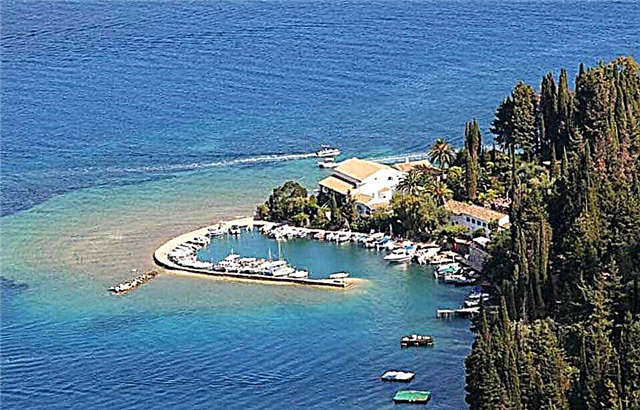
An amazingly beautiful village is located in the southern part of the capital of Corfu - Kerkir. In fact, this is a small peninsula washed by the waters of the Ionian Sea, with wonderful beaches, enchanting landscapes, cozy houses and a magnificent hotel. The village offers unparalleled views of the medieval monastery of Panagia Blachernon, located on a small island. The whole island of Pontikonisi, immersed in greenery, is very picturesque, on which the Byzantine church (11-12 centuries) is located. There is a legend about the origin of the island that it was formed from the petrified ship of Odysseus, and looks like a huge frozen mouse. (Hence the name, translated meaning "mouse island"). The Halkiopoulou lagoon, where exotic species of migratory birds nest, is a wonderful sight. It is worth coming here specially to see how divine everything here looks at sunset!
Cathedral of Panaiya Spiliotissa

There is a very interesting attraction dedicated to Saint Theodora, a blessed Christian woman who is very revered in Greece. The relics of the saint as a most valuable relic are kept in a silver tomb in front of the altar. There is also a shrine with the holy relics of Spiridon, the patron saint of the city of Kerkyra.
The cathedral was erected in 1577 as a sredstatichesky temple, but after reconstruction, which made significant changes in its architectural appearance, it became the central cathedral of Kerkyra with a rich collection of magnificent icons. The external decoration of the temple looks very noble and elegant: terracotta-colored walls are decorated with stucco ornaments in white, a cross rises above the pediment. A clock is placed on the graceful bell tower topped with an original dome.
The central hall of the cathedral is unusually beautiful, with an openwork grating of the altar, with many graceful silver icon lamps, a magnificent chandelier, and a mosaic floor. The whole design testifies to the high taste of the designers. Hundreds of parishioners come here to admire the interiors and pray to the holy relics.
Spianada Square

In the town of the same name on the island, in its center is the largest square in Greece, built in the 19th century next to the ancient Venetian fortress, which in itself is also an interesting attraction. Spianada Square is a territory of picturesque greenery of trees and beautifully trimmed shrubs, unique attractions and a favorite place not only for locals, but also for tourists. The square is divided by a passing street into two halves: Ano Plateia and Kato Plateia (Upper and Lower squares).

Of great interest among tourists is the Maitland Museum - a Romanesque rotunda gazebo, created in memory of the British officer Thomas Maitland. The intricate metal fence, the openwork ligature of the dome framing, the thin pillars of the rotunda delight the audience. The majestic Palace of Saints Michael and George, built of Maltese stone, is a real architectural decoration of the square. The classical style of the building, the long colonnade, the arched vaults of the side annexes create a harmonious picture.
In the center of the fountain on the palace ground, on a cylindrical pedestal, stands a monument to Frederic Adam, the ubernator of the Ionian Islands, who became a folk hero at the Battle of Waterloo. The base of the monument is a huge stone that resembles a rock overgrown with ivy, which creates a patriarchal background for the entire structure. There is a bronze statue of a native of Corfu, the former president of Greece, I. Kapodistrias.
The sumptuously decorated Music Pavilion hosts concerts of the Philharmonic Orchestra. The Asian Museum will not leave you indifferent, the expositions of which present many masks, various dishes, samurai battle armor, and various types of eastern weapons. In one of the cozy corners of the square, under the spreading shade of a century-old tree, there is a modest bust of the famous author of books about animals, Darell, whose nose has been rubbed to shine by passers-by.
"Channel of love" in Sidari

The small town of Sidari is famous for its beach at a narrow strip of water called the "Channel of Love". This place is an amazing natural phenomenon, formed by the forces of water, which has washed out for millennia a narrow channel (20 m wide) in the thickness of the rocks. Here are wonderful conditions for families with children: the strip of the sea is reliably protected from the wind, there is always warm water in it. A wonderful beach surrounded by beautiful landscapes, a romantic legend about the origin of the canal have made it a magical destination for many tourists.
The legend about two lovers who were turned into 2 rocks by angry gods gave rise to signs that the visitors of the “Channel of Love” certainly follow. If people want to stay with each other forever, they must cross the channel together. If a person wants to find his love, the other half, then he must swim under a rocky arch and say aloud the name of the person whom he would like to see next to him in life.
Here you can look into mysterious caves and tunnels, see beautiful landscapes and spend unforgettable days. To get to the "Channel of Love", you need to cross Sidari, focusing on the famous Peroulades beach. To the right of it is a romantic beach (a special sign points to it).
Sidari beach

The town of Sidari, despite its small size, is famous for its beaches. Apart from the Channel of Love and Peroulades, the beach of the same name is very popular. In fact, this is a whole resort-beach area, uniting several picturesque villages, connected by beaches. The longest of them is the Sidari beach, located next to the old fishing harbor (36 km from the center of Sidari).
The beach is famous for its wide sandy strip jutting into the sea like a bay, where there is sand instead of water. This attracts a huge number of vacationers with children here, who can freely run on the soft sand, play and sunbathe in safety: there are no rocks here. Enchanting views open from all sides: the blue of the sea, the whiteness of the clouds, the yellowing rocks in the distance create wonderful landscapes.
Well-developed infrastructure makes it possible for everyone to have an active rest. Here you can rent paragliders, quads, motor boats, catamarans, water skis, surfing and diving equipment. Many cafes, restaurants and cafes offer delicious quality dishes from fresh fish, seafood, vegetables and fruits. Night discos, various entertainment programs attract young people. Not far away there is another small beach surrounded by high cliffs. It is chosen by experienced swimmers, diving and underwater photography.
Fortress Angelokastro

This ancient Byzantine fortress sits atop the island's northeastern coastline, near Paleokastritsa. The powerful fortification was erected by Emperor Michael II Komnenos at the beginning of the 13th century and named after his father Angelos. Now it is otherwise called the fortress of the Archangel Michael, because there is a small church nearby, dedicated to the archangel. The fortress was of great strategic importance as the westernmost outpost of the Byzantine Empire, which included the city of Kerkyr (until 1267).
The results of archaeological excavations in 1997, in particular, two Christian tombs testify to the settlement of these places in the early Byzantine period of 5-7 centuries AD. e. After the completion of the construction of the fortress, the ancient monastery of Paleokastru was moved to another, safer place on about. Mykonos, where it is to this day.

Despite its inaccessibility, the fortress was captured in 1267 by Angelokastro tribes, which became known from an ancient manuscript - the oldest written monument in the history of Angelokastro. The Angevins were expelled, but in 1386 the fortress was besieged by the troops of the then powerful Venetian Republic, and it passed into its possession. Many times after that, the Genoese and Turks tried to conquer the legendary fortress, but it did not surrender, like the entire island of Corfu.
Today, the fortifications, carefully restored, serve as an open-air museum, where you can visit the Church of the Archangel Michael - a true monument of antiquity. An interesting sight is the chapel of Agios Kiriyaki, which has well-preserved unique frescoes from the 18th century. Here you can see the images of those who, at the cost of great labor, created stone structures, the history of past centuries passes before our eyes. From the fortress you can see the stunning beauty of the picturesque panorama of the surroundings.

